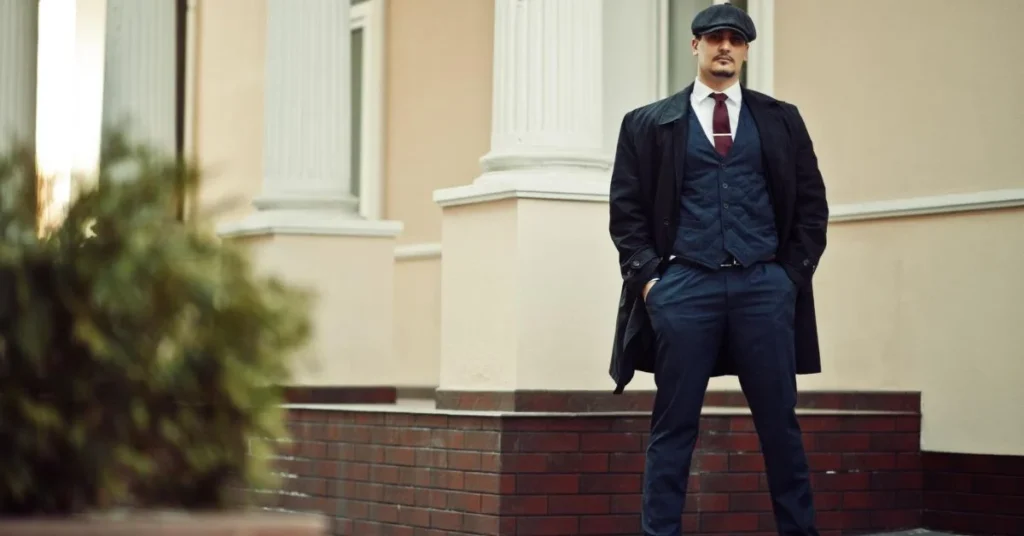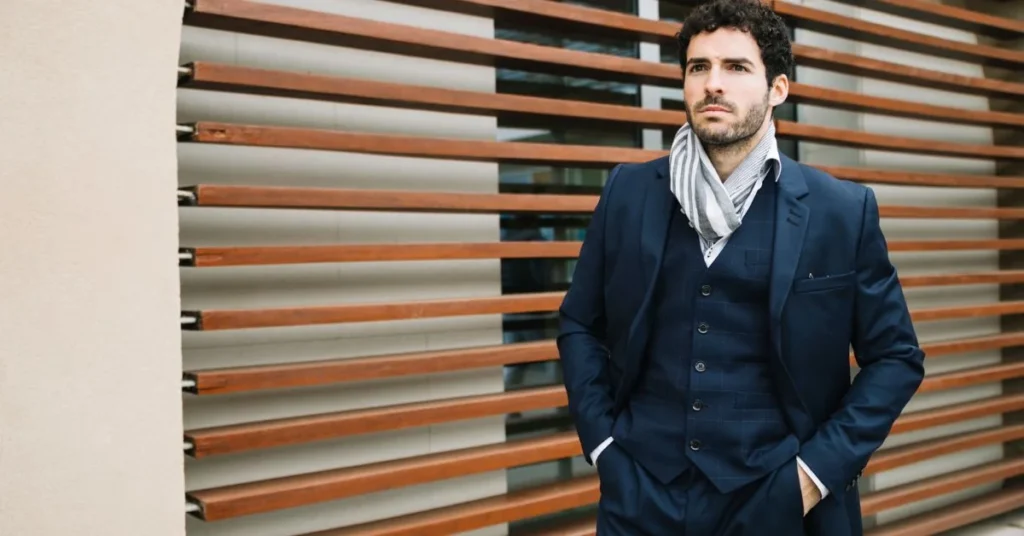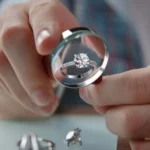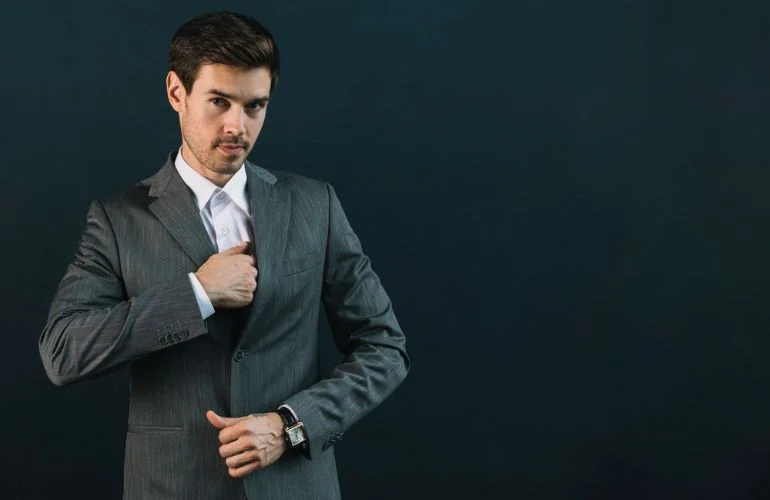Navigating the world of men’s business dress attire can be a daunting task, especially for those just entering the workforce or looking to refine their professional image. Understanding the essentials of business dress is crucial for making a strong impression in the corporate world. This article provides a comprehensive overview of men’s business attire, ensuring you look sharp and sophisticated at the office or during business events.
For those wondering about the specifics of business days and how they impact your work wardrobe decisions, it’s important to be aware of what constitutes a business day. If you’re curious whether Saturday counts as a business day, you can find more insights in this article. Understanding this can help you better plan your attire for different occasions
Understanding Business Dress Codes
Business Formal: The Boardroom Standard
Business formal attire represents the pinnacle of professional dress codes, typically required for high-stakes settings such as executive board meetings, formal business dinners, or dealings in finance and law sectors. This dress code demands a dark-colored suit, preferably in navy or charcoal, a light-colored, preferably white dress shirt, a conservative tie, and impeccably polished dress shoes, all of which are essential components of men’s business dress attire.
Business Professional: The Everyday Office Look
Business professional attire, while slightly less formal than business formal, still maintains a high degree of polish and is ideal for daily wear in most traditional office environments. This style includes a variety of suit colors and patterns, which should be paired with well-coordinated dress shirts, conservative ties, and quality leather shoes. It’s important that these elements are tailored to fit well to maintain a sharp, professional appearance.

Business Casual: A Relaxed Yet Polished Style
Business casual is a commonly misunderstood dress code that bridges the gap between formal and casual wear. Suitable for less formal offices or casual Fridays, this attire typically consists of chinos or slacks paired with a collared shirt. Depending on the workplace, a blazer may not be necessary, but dress shoes are still recommended to maintain a professional look.
Smart Casual: Modern Professional Comfort
Smart casual attire offers the most flexibility, allowing for a blend of casual and formal elements. This modern dress code is often appropriate for creative industries or startups and can include jeans paired with a blazer, or a sweater over a button-down shirt. The key to mastering this look is to ensure that each piece is in excellent condition and fits well.
Key Components of Men’s Business Dress Attire
Suits: The Cornerstone of Business Attire
The suit is the centerpiece of business attire. A well-fitting suit in navy, black, or gray is a must-have in any professional wardrobe. The fit should be snug but comfortable, with the jacket shoulders aligning with your own and pants that break just above the shoes.
Dress Shirts: Foundation for Layering
Dress shirts form the base of your outfit and should always be clean and well-pressed. White and light blue are staples for any professional wardrobe, but varying patterns and colors can be appropriate depending on your industry and office norms.
Ties and Accessories: Adding Personal Flair
Ties can add a pop of color or a personal touch to your outfit. Accessories like watches, cufflinks, and belts should complement, not overpower, your attire. When in doubt, choose simpler, more classic pieces to maintain a professional look.

Shoes: The Final Touch
Shoes can make or break an outfit. In business attire, classic leather shoes such as Oxfords, Derbies, or loafers in black or brown are appropriate. Ensure your shoes are well-maintained and polished regularly.
Blazers and Sports Coats: Versatility in Layering
Blazers and sports coats can add a layer of sophistication to any business outfit. They provide flexibility for business-casual settings and can be paired with different trousers and shirts for varied looks. Choose neutral colors for maximum versatility or a subtle pattern like a herringbone or plaid for a touch of personality.
Seasonal Considerations: Adapting to Climate
Adjusting your business attire according to the season is essential for comfort and appropriateness. In warmer months, opt for lighter fabrics such as linen or light wool, and in colder seasons, heavier materials like tweed or thicker wool can be used. Seasonal adjustments also apply to the color palette, with lighter shades being more suitable for spring and summer, while darker tones fit the fall and winter months.
Dressing for Your Industry
Understanding Industry Norms
Each industry has its specific norms and expectations regarding dress codes. Finance and law typically lean towards more conservative attire, while creative industries may allow for more expressive styles.
Adapting to Modern Trends
While traditional business attire remains dominant, modern workplaces are increasingly accepting of contemporary styles. This can include more casual blazers, stylish accessories, and even smart sneakers in some work environments.

Common Mistakes to Avoid
Ignoring Fit and Comfort
One of the most common mistakes in men’s business attire is wearing clothes that don’t fit well. Ill-fitting clothes, whether too loose or too tight, can detract from your professional appearance.
Overlooking the Importance of Grooming
No outfit is complete without proper grooming. This includes neat hair, a clean shave or well-trimmed beard, and minimal cologne.
Neglecting Wardrobe Maintenance
Regularly caring for your clothes is essential. This includes laundering, pressing, and repairing items as needed to keep them looking their best.
Conclusion
Men’s business dress attire is a crucial aspect of professional life that impacts first impressions and workplace dynamics. By understanding and adhering to dress codes, investing in quality pieces, and maintaining your wardrobe, you can ensure that your professional attire contributes positively to your career success. Whether you’re dressing for a regular day at the office or a high-stakes business meeting, the right attire can help you feel confident and prepared for any professional challenge. Click here for more information.

What are the essential pieces of men’s business dress attire?
The essentials include a well-fitted suit, a variety of dress shirts, appropriate ties, and a pair of polished dress shoes.
How should a suit fit for proper business attire?
A suit jacket should fit snugly at the shoulders and allow free movement of the arms. Trousers should sit comfortably at the waist and break slightly at the shoe.
Can accessories be part of men’s business dress attire?
Yes, accessories like watches, cufflinks, and belts can enhance business attire but should be chosen carefully to maintain professionalism.
What is the difference between business formal and business casual attire?
Business formal typically involves dark suits, dress shirts, and conservative ties, while business casual allows for more variety in colors and patterns, and sometimes permits the omission of the tie.
How often should business attire be updated?
You should update your business wardrobe as needed to replace worn-out items and to keep up with subtle changes in fashion and professional standards.











